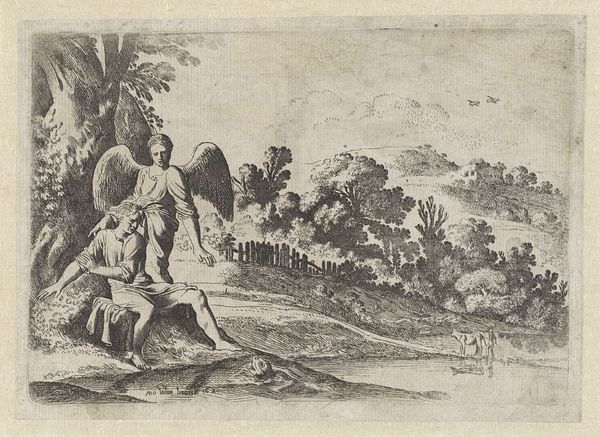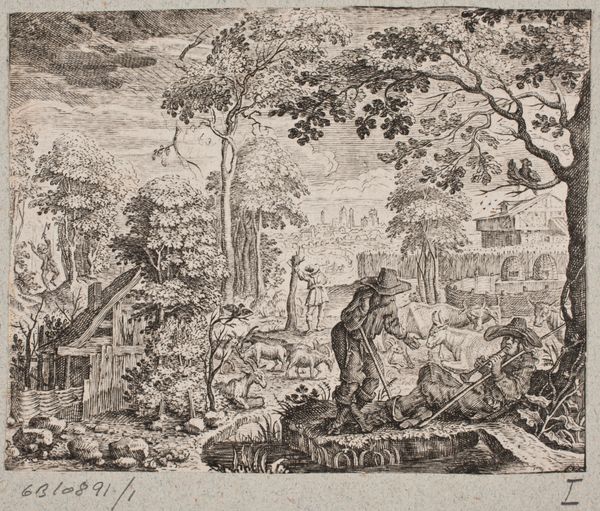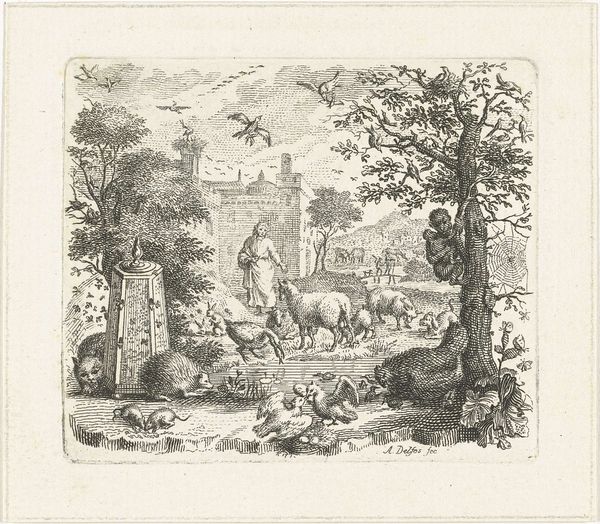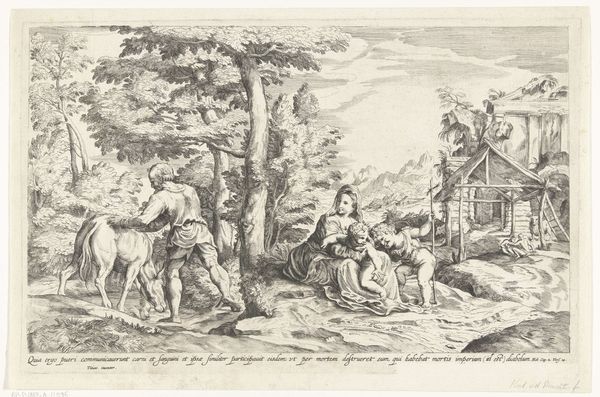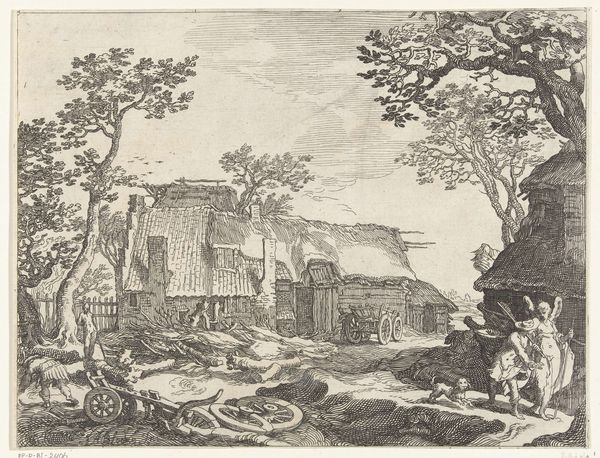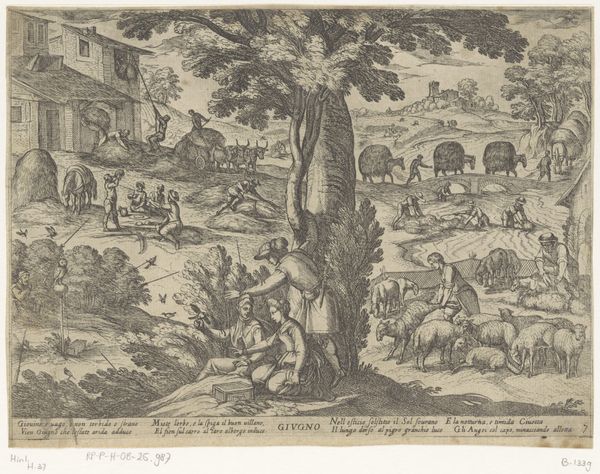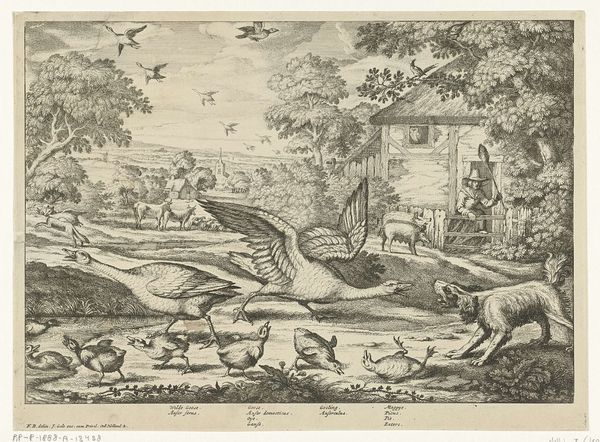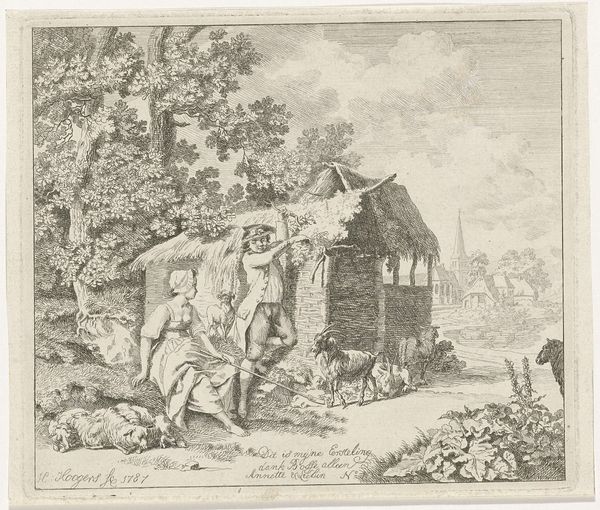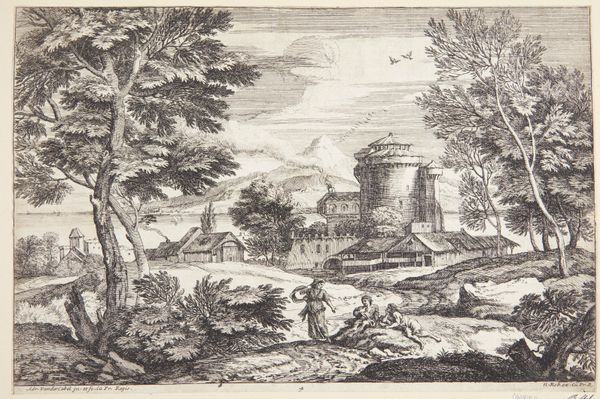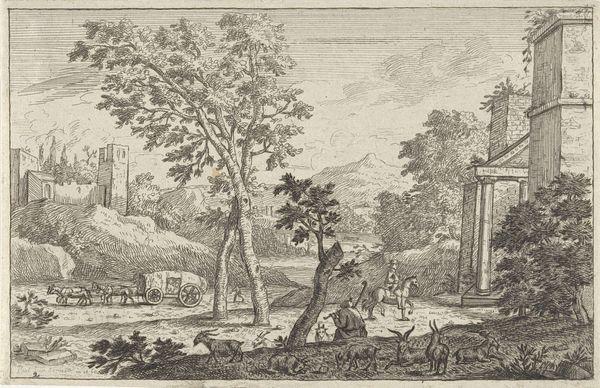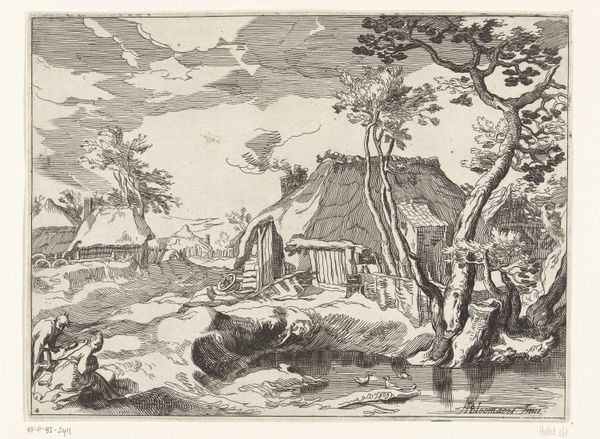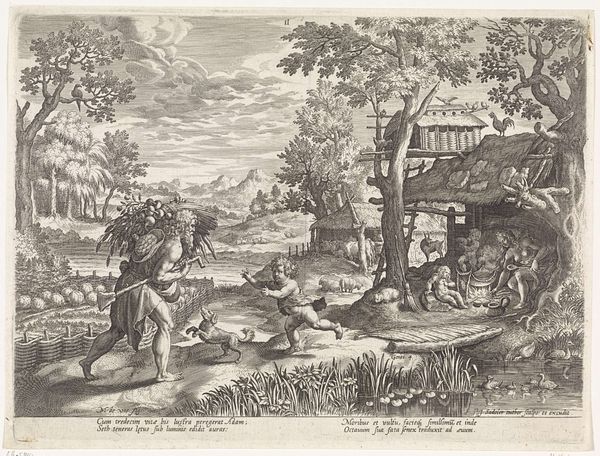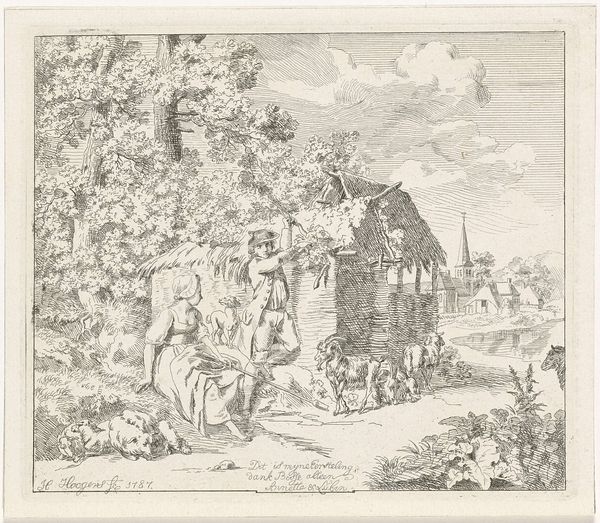
At left four shepherds with musical instruments seated under a group of trees; at right a hilly landscape with buildings 1512 - 1522
0:00
0:00
drawing, tempera, print, engraving
#
pencil drawn
#
drawing
#
tempera
# print
#
landscape
#
figuration
#
11_renaissance
#
pencil drawing
#
geometric
#
men
#
history-painting
#
musical-instrument
#
italian-renaissance
#
engraving
#
building
Dimensions: Sheet (Trimmed to plate): 5 3/8 × 10 1/8 in. (13.6 × 25.7 cm)
Copyright: Public Domain
Editor: This engraving, "At left four shepherds with musical instruments seated under a group of trees; at right a hilly landscape with buildings," was created by Giulio Campagnola between 1512 and 1522. The contrast between the pastoral scene and the looming buildings creates such an unsettling, but beautiful effect. What social commentaries do you think Campagnola was making? Curator: That unsettling feeling is exactly where the power of this print lies. Consider the historical context: the Italian Renaissance wasn't just about beauty; it was also about massive social and political shifts. The shepherds represent an idealized past, perhaps a nostalgic yearning for a simpler, pre-urban life. But look at those buildings – they represent the burgeoning city-states, centers of power, commerce, and also, inequality. Editor: So you're suggesting this isn't just a pretty landscape; it’s a critique of urbanization? Curator: Precisely. Campagnola, through this juxtaposition, invites us to question the cost of progress. Who benefits from this so-called advancement, and who is left behind, romanticized as simple folk while their way of life disappears? It's also important to think about the intended audience. Prints like these were circulated among a relatively elite class, those who were both benefiting from and perhaps also feeling alienated by the changing social order. Editor: That tension makes the image much more compelling. I hadn't considered it as a statement on class. Curator: Art often functions as a mirror reflecting the anxieties and aspirations of its time. Campagnola is speaking to anxieties about the loss of an idealized past as society moved toward urban centralization. The idyllic musical interlude feels like a pointed criticism of the architectural world beyond it. Understanding the cultural and political moment allows us to see beyond just the surface beauty and engage with the deeper, more complex social commentary embedded within the work. Editor: This perspective really changes how I see the print. I was so focused on the visual elements but realizing this is actually commentary on socioeconomic issues provides such richer context. Thanks! Curator: It's in that layered understanding that art truly resonates, inviting us to reflect on the past and draw parallels to our present.
Comments
No comments
Be the first to comment and join the conversation on the ultimate creative platform.
